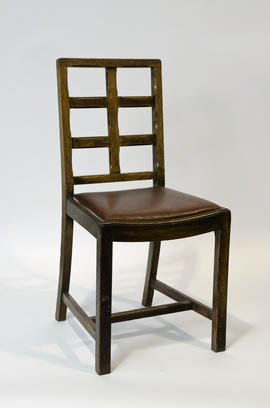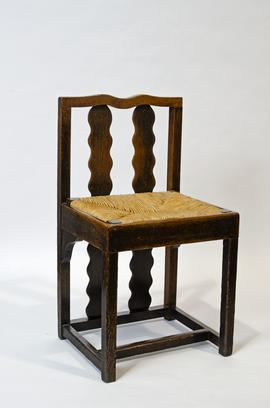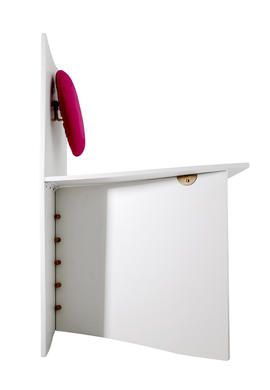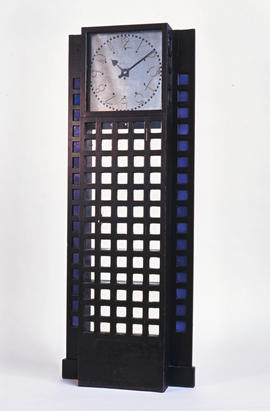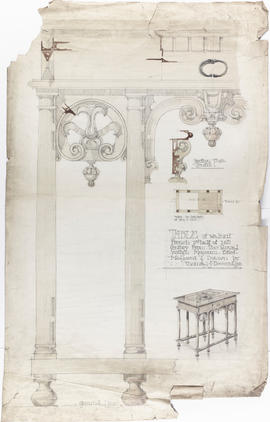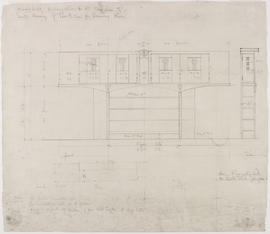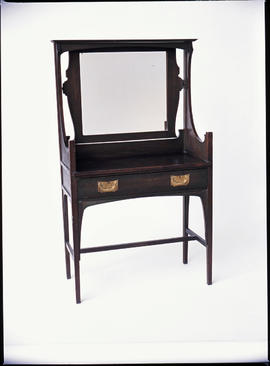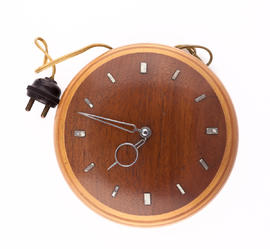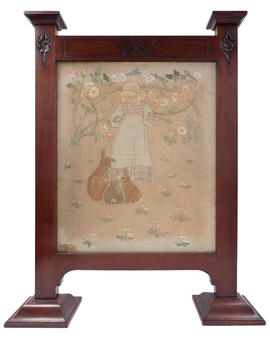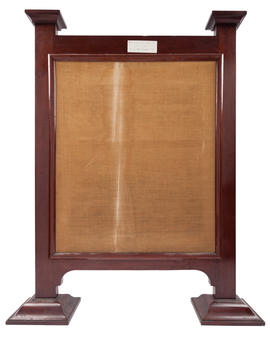Chair for Ingram Street Tea Rooms
- MC/F/24D
- Item
- 1900
This item was lost in the fire in The Mackintosh Building at The Glasgow School of Art on 23rd May 2014. Designed for the White Dining Room, Ingram Street Tea Rooms, Glasgow. The basic chair used in the main dining room, and the Cloister Room in 1900. The original seat coverings were probably horsehair. Reupholstered in brown horsehair, 1984. The Ingram Street Tea Rooms were purchased by Glasgow Corporation in 1951 for £25,000 and were then rented out as various shops and warehouses. This item was assessed for conservation in 2010 as part of the Mackintosh Conservation and Access Project (2006-2010).
Mackintosh, Charles Rennie

